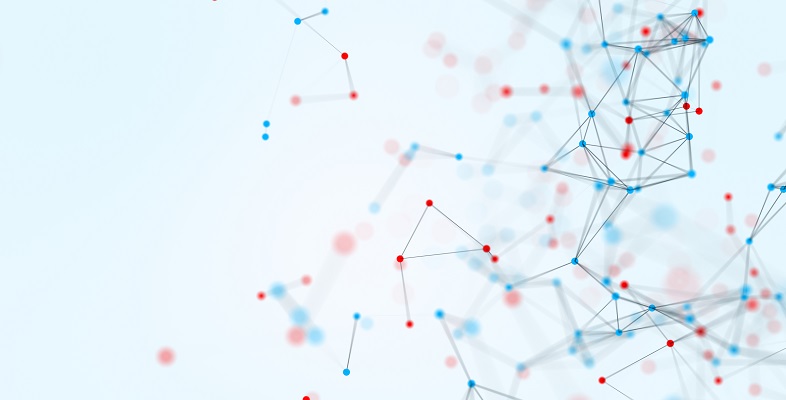3.2 Data and information
This course is also about information, which in Section 2.2 was distinguished from data. Whereas data is a discrete item, like a price or the name of a product (such as milk), information links two or more items of data to give knowledge: e.g. the patient’s temperature is 38 o C.
To give a simple example, if a person said they were standing at approximately 1 degree 40 minutes and 20 seconds longitude west (written 1°40′20″W), 55 degrees, 4 minutes and 57 seconds latitude north (55°4′57″N), you probably wouldn’t know exactly where it was. You would need to know the meaning of the words ‘latitude’ and ‘longitude’ to understand that the person was referring to a location.
Assume that latitude and longitude and the signs symbolising roads, towns, and so on are data. Longitude measures distance east and west of the Greenwich meridian in (angular) degrees, while latitude measures distance north and south of the Equator in degrees. When they are combined together in a map, they become information, because they answer questions about location. You’d find, for example, that the latitude and longitude mentioned above refer to a place called Ewe Hill in Northumbria, England. On the map, the printed words ‘Ewe Hill’ are the sign of what the place is called.
Example 3 Care planning
Human beings turn data into information through a process of:
- creating signs to represent the data
- agreeing on what the signs symbolise
- linking these signs in a variety of ways to create information
- communicating that information to other people.
The distinction between data and information isn’t always very clear. Is a bus timetable data or is it information?
You might consider that it’s a lot of data, from which you can extract information about when you need to be at a bus stop to catch an appropriate bus.
However, to the person who created the timetable from lots of data about when certain buses arrive at various points along a route, the timetable is information about the system of bus travel in a particular geographical area.
So, whether something is data or information depends partly on the perspective of the user. Data becomes information in users’ minds when it informs them (answers a question, such as how to use a bus to get from A to B at a particular time).
Here is another example.
Example 4 Sign from a stranger
You meet a stranger on a street corner. They move their right hand towards you with their hand extended but relaxed and open, palm held perpendicular to the ground. You perceive the movement. That’s the data.
You now need to interpret that data. Are they going to hit you? Do you need to dodge or duck? Because you may share at least some common culture, you might interpret this movement as a gesture to shake your hand, and not as a blow about to be struck. This would be combining your perception of the movement of their right hand towards you in a particular way with other knowledge you have about cultural signs and their symbolism in order to interpret your perceptual data in a way that tells you not to fear this person's arm movements. This knowledge (that the gesture is not hostile) is information. Alternatively, it could be said that you have used information about cultural norms and gestures in the shared cultural experience to decode the sign made with this gesture. Either interpretation is valid; indeed, both are valid.
You might consider the implications of you and another not sharing some cultural norm. Many cultures have a gesture that is intended to convey to strangers that one party has no hostile intent toward the other. However, what happens if one party (X) to the exchange doesn’t understand the sign intended by the gesture of the other party (Y)? What if there is some additional data or information available (e.g. Y is carrying a weapon)? How then might X react?
You can see from this that information is very important to us as social beings. It is also possible for information to be false, or for a person to have the wrong information, or for information to be ambiguous (subject to multiple interpretations), or for a person to misinterpret information even when it is not ambiguous. One of the themes running through this course concerns whether or not you can always trust data and information to be true, and whether or not data and information which were once true will remain so.
Activity 7 Prescriptions - information or data?
Consider a prescription for a medication for a patient. It consists of a form that needs to be complete and followed before the medication is given to the patient.
- 1. Is a prescription information or data according to the definitions given above?
- 2. In what ways might a member of the healthcare team find difficulties in interpreting a prescription?
Discussion
- You might consider the prescription to be information, because it answers the question: how do I make sure I am giving the correct medication to the correct patient at the correct time? The list of individual drugs, dose, time and signature and any separate instructions might be considered as all data.
- There might be many difficulties in interpreting the prescription. The member of the team might assume that the dosage was appropriate if they had no real knowledge of the drug, might not understand that the means of administration might be described in shorthand and unrecognised terms might be used (PO, IV). The prescription could list the drugs in a confusing order if you were not familiar with the format of the script. The form and information contained in the script assume a previous knowledge.
